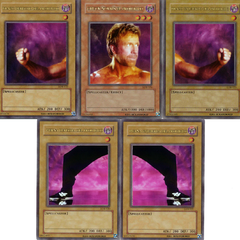Why texture quality has no impact on performance?
Go to solution
Solved by Mira Yurizaki,
Texture quality doesn't affect performance because a texture is simply a lookup table of what a color a pixel should be on an object in 3D space. It would be like if you you were looking at your TV and were asked to figure out the average color in a grid made up of 1cm by 1cm squares. This would take you the same amount of time if the TV were showing a 1080p image, a 4K image, or a 480p image. The only impact to performance texture quality has is by taking up all of the available VRAM, causing the GPU to swap data in and out if necessary, which can cause hiccups in performance
As for other options that affect performance or not:
-
Has a noticeable effect on performance
- Screen resolution
- Non-shader based anti-aliasing like MSAA or FSAA. Temporal anti-aiasing appears to have a small effect as well.
- Viewing distance, if asked to draw very far out or detailed things far out
- Options that can affect the number of objects on screen, like grass density.
- Reflection quality, both in resolution and update speed, if using real-time reflections. If the reflections are mostly cube-map based, this has little impact.
-
Has little effect on performance (but they can still add up)
- Model quality
- Texture quality
- Tessellation
- Shader based anti-aliasing methods like FXAA or MLAA.
- Anisotropic filtering
- Soft shadows, to an extent. More advanced techniques may have more of an impact.
- Depth of view
- Ambient occlusion
- Shadow quality

















Create an account or sign in to comment
You need to be a member in order to leave a comment
Create an account
Sign up for a new account in our community. It's easy!
Register a new accountSign in
Already have an account? Sign in here.
Sign In Now